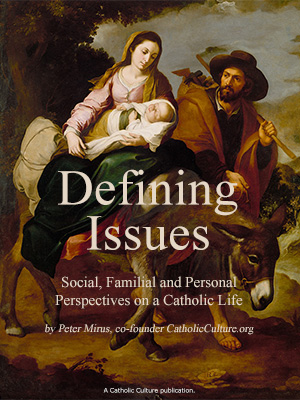in harm's way
By Diogenes ( articles ) | May 21, 2008
Free eBook:

|
| Free eBook: Defining Issues |
A "discomfiting threat to free speech," say the editors of the New York Times. They're rattled by the recent Supreme Court decision upholding a law against child pornography. Kiddie porn is bad, they admit, but the law is broad enough to include virtual porn, and that shivers their timbers:
In 2002, the court struck down parts of the Child Pornography Protection Act that banned images that appeared to be explicit depictions of children, even if they were actually pictures of adults or computer-generated images. Banning images in which there are no real children, the court held, violates the First Amendment.
After that ruling, Congress passed a new law with its own problems. One provision punished anyone who "promotes" material in a manner "intended to cause another to believe" it is child pornography. That, once again, sweeps in fake child pornography -- which is just what the court in 2002 said must be avoided.
This time, the court upheld the law by a 7-to-2 vote. That creates a bizarre contradiction. Fake child pornography is protected, but marketing fake child pornography is not. As Justice David Souter noted in dissent, it makes no sense to criminalize proposing to sell items that are themselves constitutionally protected.
It may seem hard to muster much concern about the speech at issue here. But the implications go beyond child pornography. As Justice Souter reminds us, it is an important principle in the court's political speech and sedition cases that speech cannot be banned based on bad intent, only on a "realistic, factual assessment of harm."
Implicit in the Times's reasoning is the conviction that the harm of pornography is limited to its exploitation, if any, of the persons photographed. They are unwilling to admit that it has harmful effects on the morals (and the psychology) of the community at which it's aimed, or that the community can rightfully pass laws to reduce this form of harm. Ironically, this "no blood, no foul" approach to porn has a parallel in Archbishop Gregory's handling of the clergy abuse crisis. By responding to any and all misgivings about deviant clerical sexuality with the mantra "it's about the children!" Gregory successfully deflected reforms by foregrounding the implicit corollary, "if no children are at risk, your objections are irrelevant, captious, and obstructive." Turn an objective moral norm into a sentimentalism and you're home free.
It's wryly amusing that the New York Times, no enemy of legal sanctions against purveyors of "hate speech," should see the ban on vending virtual porn as a threat to our sacred First Amendment liberties. Their complaint against outlawing sales promotion "intended to cause another to believe" there were real children at risk is itself disingenuous. Think of the Times's three or four favorite victim-groups of the moment. If someone faked a snuff film in which the victim was one of the Times's pets, and the vendors "intended to cause their customers to believe" that the videos showed an actual murder instead of a staged one, would the editors plead for their acquittal on First Amendment grounds?
All comments are moderated. To lighten our editing burden, only current donors are allowed to Sound Off. If you are a current donor, log in to see the comment form; otherwise please support our work, and Sound Off!







